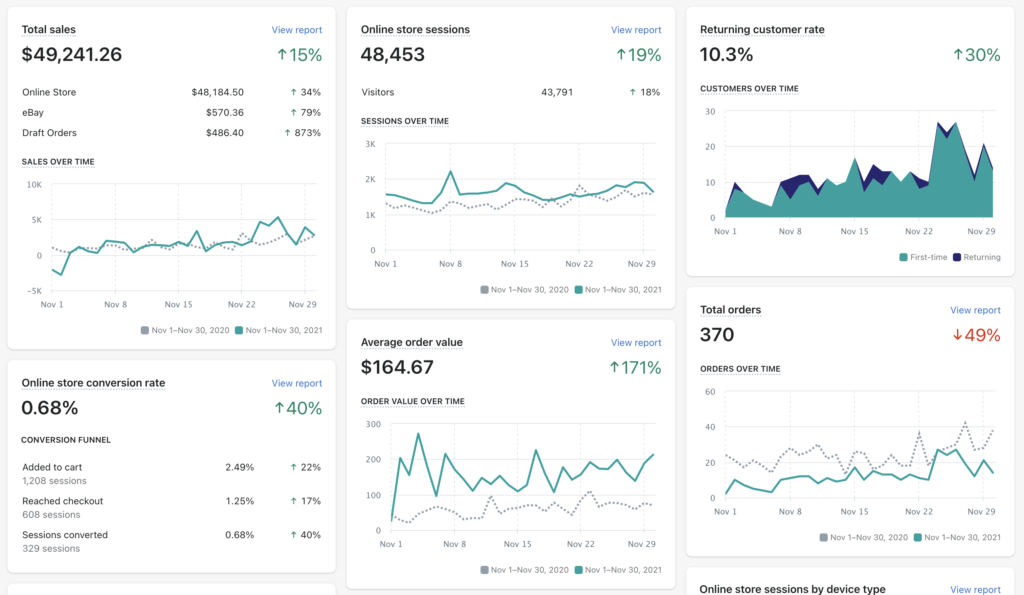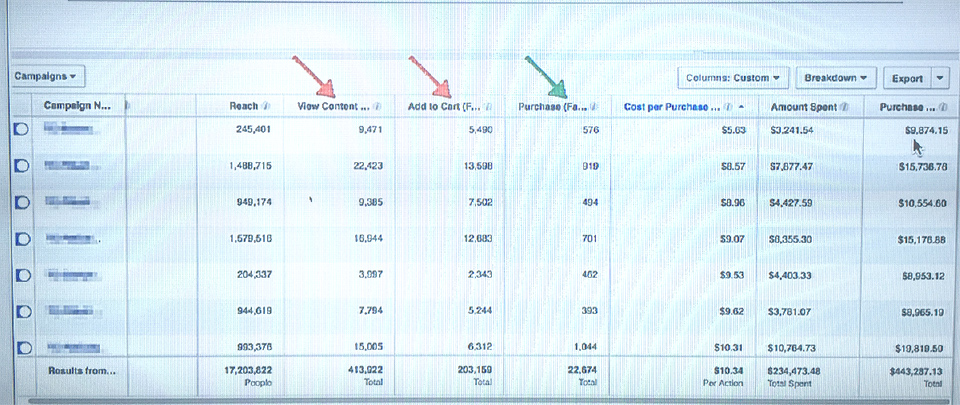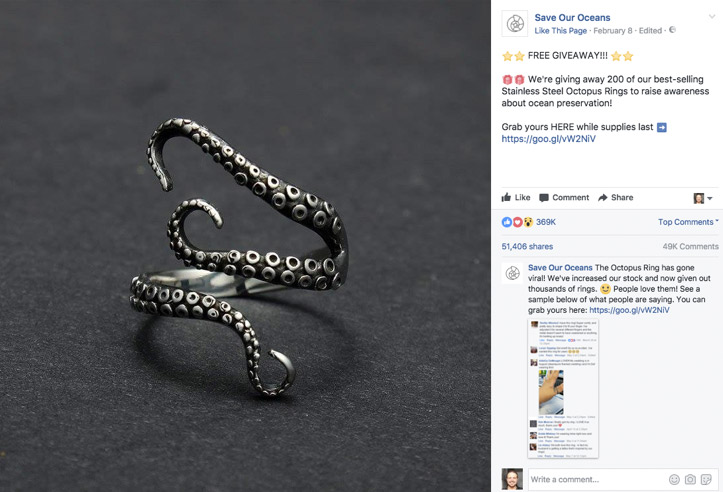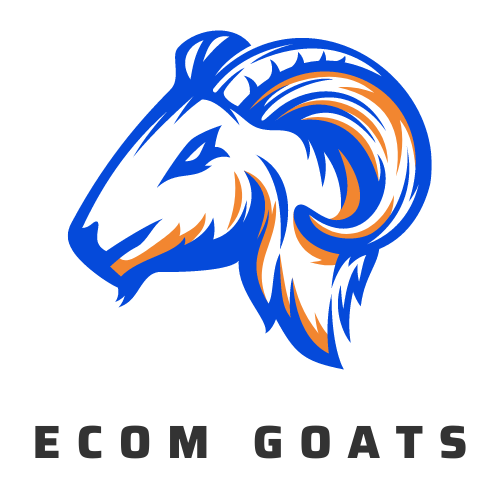WHAT IS DROPSHIPPING?
And how are people building a million-dollar business with it?

WHAT IS DROP SHIPPING?
Dropshipping is an extremely popular topic on the internet. People who understood how this business model works have created million-dollar businesses all over the world, and I know dropshippers who do this in USA as well. Dropshippers have their own online shops, they do not have any warehouse or ever touch the goods they sell, they deal exclusively with digital marketing. Let’s dive in.
Video: How dropshipping works from start to finish
This video explains how dropshipping works, in a very simple way and how to start dropshipping as a complete beginner!
What is Dropshipping?
In short, the dropshipping business model is this:
- You have your own online shop where you sell various things, or even one single thing.
- You are not the manufacturer of the goods, nor do you have any of the goods in stock. You never physically touch the goods you sell.
- You’re all about marketing – getting people to your site, conversion optimization, the Facebook pixel, and all the things I will be writing about on this website.
- Someone else has the goods and stock (most often in China, but it can also be local). The manufacturer is engaged in production and receives X orders from you per day, which he packages and ships to the people who ordered from you.
Note: Before you think that this is some “easy money” – it may seem simple as I wrote, but to do this you need an extremely good knowledge of marketing, social trends, and human psychology. Read thoroughly everything I have ever written on this website and if everything is 100% clear to you, then you can slowly enter this kind of business.
In particular, you need to understand very well what a sales funnel is, a marketing pixel (primarily Facebook’s) and all its possibilities, then retargeting, A-B testing, and perhaps most important of all – a feeling for people and their passion.
Note 2: This is not affiliate marketing – it is incomparably better than that, because you are developing your brand.
At first glance, it seems like this is some kind of “resale of goods”, but it is not – this is incomparably more sophisticated, and even allows you to develop your own global brand, something that was not so easily possible until recently.
Here’s what Facebook Ad Manager looks like from Adrian Morrison, who deals with Dropshipping. Impressive figures.

Let's spy some dropshipping stores, it will all make sense
First, and probably the most important step is to find a passionate group of people on the Internet. People who are passionate about certain things. It can be “people who are passionate about beautiful watches”, but it is an idea at the first ball and there are already 1000 of watch stores, so don’t do that.
Let’s say we create a shop on the theme of “survivalists”, people who are passionate about going to the mountains and surviving in difficult conditions.
This is what such a dropshipper shop looks like. The shop was built on Shopify. Dropshippers use Shopify because it is by far the most optimized for quick sales, plus with Shopify you can build your entire shop yourself without a developer.
Shopify is currently having a promotion at this link – they’re giving you the option to host your entire shop 3 Days Free + 1 Month for $1. Even if you work locally, you are not a dropshipper and you want a shop for your local business, you should get this!
The things you see on dropshipping stores never reach the hands of the owner of that store, they are located in China and they dug them up on AliExpress. He sets his prices, as much as he thinks his customers are willing to pay, and those orders are passed on to the Chinese supplier, where these things cost at least 3x less. The China guy packs and ships to USA for $2-3 and the items arrives within a week. Dropshippers usually communicate that shipping is free, and they build the shipping costs into their price.
You’re probably wondering why do people from all over the world order from a site like this, instead of going to AliExpress and ordering themselves. There are 3 main factors:
- Many people don’t know about AliExpress.
- Others who know about Ali, simply don’t trust it and think all the products there are crap.
- The owner of a dropshipping store created a themed shop, chose the best things and images. Everything looks professional and trustworthy.
Let’s go back to choosing a niche, in this case “survival gear”. When choosing a shop niche, it is extremely important to research whether it is a niche that has potential, that it is not something that a million others are doing, when someone sees it they say “wow, I didn’t know there was a website for THIS”
This bolded part above – this is probably the most important thing to keep in mind if you are starting Dropshipping.
You need to check if there are pages on Instagram dealing with a related topic, with a large number of real followers, perhaps the profile of a real life mountain climber (is this how they are called?). On these profiles, we can rent so-called “paid shoutouts”, where usually that page would publish one of our products and a link to the shop in the “about” section for 24 hours. We pay 100-200 usd for posts like this (for pages with around 100K followers), and that is returned to us through sales, which can be up to 50x the investment if we picked the right auudience and influencer.
Keep in mind that dropshipping with Instagram influencers is a different kind of game – some will get you zero sales and some will cover all those losses and still make a profit on top of that. With Facebook you deal with pixels and conversion campaigns and have full control – more on that later.
Traffic for our shop can also be brought from other channels such as Pinterest, Tumblr, Reddit. There are very creative solutions and ideas for traffic and we will cover them all on our BLOG. But it’s always the same – either we’ll pay for ads on some platform, or we’ll contact the influencers directly. They agree to publish something for us, and we transfer the money to them via PayPal.
Dropshippers mostly do Facebook ads (pixel and optimization) and Instagram (influencers) because those two ways have proven to be the most effective.
So if we have found our passionate group of people and ways to pop on their screen, then this is a good idea for a store.
Here are some more dropshipping stores that make a lot of money
A store for parrot equipment. It’s really easy to target parrot owners on Facebook. Generally, any pets that are specific. For example, shop for owners of reptiles – lizards, chameleons, iguanas… AliExpress is full of UV lamps for lizards, artificial rocks, cacti, to make your pet a real little desert.
A store that sells holders for Kindle readers in various designs (is that correct?). They peak at 15k visitor per month. It’s very easy to target these people on Facebook.
Equipment for MMA fighters and people who train MMA – a huge army of hard-core fans around the world. Any “niche” martial arts is a good topic: cheap targeting, and passion.
Your store can also be dedicated to a single product, such as “Black Mask” (this trend is now slowly going down). You need to dig on Instagram and Google trends to recognize the trend that is about to explode, react quickly and launch a very nice shop as fast as you can.
Dropshipping store setup
Dropshippers run their shops on Shopify in 90% of cases. It is currently on sale – create your own shop at this link. Their site is always online, and what is even more important – they have absolutely every plugin you will ever need for Dropshipping – scarcity counters, systems for importing and finding products from AliExpress, pixel optimizers, and many other plugins.
Every Dropshipping course and video you watch uses Shopify, so you can immediately find and install a plugin that someone talks about in that course.
Once you set up a shop on Shopify, you can grab one of their free themes (designs), or you can also go with paid one if you have the budget. Do not stress too much about the design of the home page, because the key thing in this business is how your product page looks like.
And it should look as clear as possible, clean, with a large amount of empty spaces, readable text, nice looking images and gifs. Shopify themes are already ironed out and built to convert.
Once you have a shop, the next step is to go to AliExpress and look for things that are so-called “winner products” – these are products that bring a smile to the face of the people who buy them.
In the case of “survivors”, you need to spend a couple of weeks learning everything about them. Every niche that is narrow, you have to do a massive research. You can’t just sell products that are obvious. You can use sites like Google trends to see what’s popular in that niche right now, and you can also poke around TikTok, Instagram, Pinterest, and Facebook to get the hang of it yourself.
Of course, you need to register the perfect domain as well. This topic is so important that it needs a massive standalone blog post only about choosing the perfect domain name. You can get great price for a domain name on Namecheap.
Once you find 10-20 interesting products to start with, you need to fill your shop with them. Find the best pictures possible – this is the thing that makes all the difference between a “Chinese” and a serious shop. Some dropshippers order the product themselves to see the quality, to know what they are selling, and to take better photos than the ones from Aliexpress.
You will create a good added value with photos, and make someone who would never buy “from the Chinese website” buy from you, because it looks much nicer. People actually do a similar thing offline – they go to the Chinese store, pick some decent clothes, iron them and put them in some fancy boutique with great lighting, and set the prices three times higher.
Another thing where you will create additional value compared to the Chinese websites like Aliexpress, is the product description. Knowledge of copywriting helps a lot here. The Chinese sellers will write the dimensions, measurements, material, a boring description, and that’s it. But you – you can write an essay that starts with:
“On foggy mountain mornings, this tent cover will keep you dry and warm and will prepare you for the adventure that awaits you…”.
Once you have filled the shop with items, you need to set the prices. You need at least 2-3 times more than the purchase price (including shipping). So, if the purchase price is 10 dollars and the shipping is 5, you have to sell it for least 30 dollars.
Campaign
The campaign is done through paid advertisements, or through organic traffic, but most dropshippers use paid traffic.
First, we need to install our Facebook pixel on the site. Shopify has done it very well, they nicely track all events, add to cart, purchases and so on… nothing could be done without it!
Second, we need a Facebook page. It may have zero followers to begin with, but you can get her a few hundred fans by uploading an interesting video on an interesting topic, then create a campaign for video views from countries that have a low CPM price. Just to have some social proof when someone opens to explore the page. This is optional.
The campaign is always done for one specific product first. You need to choose the “hottest product” from that niche right now, or something that many people didn’t know existed and you are opening their eyes. It can also be something very beautiful and creative. There are various approaches, it depends on the psychology of the target group and what one is leaning towards.
There are various ways to set up a campaign, but a standard dropshipper model would be as follows:
Let’s create a “conversion campaign” on Facebook.
We give it an initial pool of people from which the pixel will further refine based on the first conversions. Say, all fans of the Survivorman series. Again, this can’t happen overnight, you need to know your audience well and research everything in advance.
Create a very good and interesting advertisement, usually a video advertisement in the UGC style. Here, it’s best to collect tricks from other dropshippers, because they’ve already figured out what’s going well.
Here’s a little motivation on a good example. This is from Facebook:

This is an ad that has 382K real likes and 59K real shares! It’s a dropshipper shop called “Save Our Oceans”, obviously intended for people who are passionate about saving the oceans, saving sharks, whales, dolphins, and all that stuff.
The shop owner found this beautiful octopus ring on AliExpress for half a dollar, AND shipping is another dollar. On the other hand, he wrote that the ring is being given away for free, to the first 200 people who contact them (and probably 20,000 people have contacted them), and “only” the shipping fee, which is 6 dollars, needs to be paid. The owner of this shop probably earned a couple of apartments just from this one Facebook post. And who knows where he is – maybe he is sitting somewhere in some village in India and no one knows about him.
The great thing is that a conversion campaign was initially created and people who are fans of ocean conservation and similar topics were targeted. From there, the pixel itself separated the ones that would buy. Once a few hundred customers have accumulated, then new conversion campaigns with a “lookalike audience” are created, which target many more people than the initial ones, and thus in the end we reach tens of thousands of customers.
Here, it works very well if it is written that 10% of the sale goes to some kind of protection of the ocean, sharks, whales… whatever. But you have to really pay 10% of the profit for those purposes, you have online sites just for that.
So, in order to do this job successfully, we need to know very well the psychology of people, but also the technical capabilities of pixels, as well as knowledge of copywriting, photography and design. Let’s combine all that knowledge into one system.
Fulfillment and money flow
You are probably wondering what happens when someone orders from this shop of ours, that is, where is the money and how is it forwarded to the supplier.
First, when someone places an order in our shop, it has to go to some account, right? Shopify allows us to connect various payment accounts, the simplest being PayPal. However, not everyone will pay with PayPal, some people want to pay with a regular card. For those we can use 2Checkout, but lately they started rejecting dropshippers. Another option is Stripe, but it requires an overseas company. Here you will have some ups and downs, but in general it is very easy to set up.
So, all in all, the money is in one of our accounts but we don’t have the products. Now what?
Let’s say that today we had 100 orders, 10 dollars each, and the price from our supplier is 5 bucks. We transfer 500 dollars to the supplier via PayPal and from the Shopify store we download an Excel spreadsheet with all orders from today – name, surname, address, etc. The supplier gets the money and addresses and immediately starts shipping all over the world, wherever the orders are coming from.
Of course, before that we made an agreement with the supplier, asked him if he could provide a larger quantity. In general, as soon as you tell your supplier “I am a dropshipper”, everything is clear to him and he knows what to do. He sends everything in bags where you can’t see where it was sent from, and he can also put your brand name on them. I highly recomend this, it costs couple of cents but this is the first step from dropshipping to brand development.
In case of any complaints, you just refund people without any questions. That’s the only way to do this business. Of course, that’s why it’s important to choose something that is of high quality at the start. Look at AliExpress ratings and social proof signals – comments, ratings and store ratings – there is a whole logic to it.
Print on demand dropshipping business
Apart from these ready-made items, we can also make a dropshipping business with printed items. Sites like Printful can print our illustrations for us on over 100 different things – t-shirts, hoodies, pillows, shower curtains, and so on.
It’s a little different kind of dropshipping. The shop is usually about a certain theme, and we have our production and design. For example, it is the business model of the Instagram page Men With Coffee, which builds followers and then converts them through the shop menandcoffee.com. The woman who runs the page said in a Reddit interview that she makes about $120K a year selling T-shirts.
In general, every thing you see on AliExpress can be made by with your logo or custom print. Services like Printful have automated it a little. You generally need to have good illustrations (they can be done by illustrators from Fiverr or slightly better ones from Behance, Dribbble, etc.).
Instagram influencers
More and more dropshippers are switching to generating traffic through Instagram influencers, as I wrote above.
In short, it comes down to finding people who you think to be followed by people who would buy something from your shop. Then you make an agreement with them, you send them the product, they take a photo of it and write a few words of praise, and put a link to your shop (or to the page where that particular thing is bought) in the “about” section. This is called “instagram shoutout”, and it’s great to find medium-known people who will charge about 100 dollars, because those with millions of followers ask for a few thousand dollars each. You can contact them when your business grows, because it is not wise to experiment with those figures in the beginning.
As I said, some of them will convert you well, some less well. Be sure to tag the URL you give the influencer to share, so you can see in Google Analytics exactly how many sales that influencer brought you. Once you have 10-20 influencers that have brought you a positive ROI, you can continue to work with them with similar products, and it’s easy from there.
If you want to do this…
This text is an introduction and if you want to do dropshipping you need to get into the details and the nitty-gritty. I have thrown various things here without any order, but the basic principle simple.
